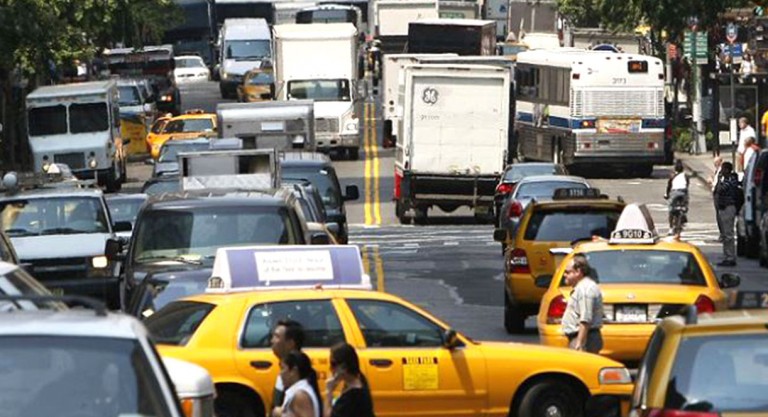File Photo
The congestion pricing financing model is a crucial piece of the MTA Transformation Plan.
By Michael V. Cusenza
If politics makes strange bedfellows, it seems the Metropolitan Transportation Authority can pair previous bitter enemies.
Governor Andrew Cuomo and Mayor Bill de Blasio, once at very public odds over many issues, including the control and funding of the MTA, announced on Tuesday a proposal to transform the MTA and create dedicated and sustained funding streams for the agency.
Highlights of the MTA Transformation Plan:
• The MTA will develop a reorganization plan to make the agency more efficient and effective. All common functions such as construction management, legal, engineering, procurement, human resources, advertising etc. will be consolidated and streamlined in a central operation. The individual divisions will focus on day-to-day management of their primary operation. The restructuring plan will be completed by June of this year. The restructuring plan must be coupled with a change in culture, which will generate fresh ideas and new perspective from new and recently appointed senior and mid-level management recruited from the private sector and other cities and states.
• The plan would include a congestion pricing financing model. Electronic tolling devices would be installed on the perimeter of the Central Business District defined as streets south of 61st Street. in Manhattan. The tolling system will account for tolls previously paid by drivers entering Manhattan from designated crossings. Tolls would be variable providing discounts for off-peak hour travel. Emergency vehicles will be exempt from congestion pricing tolls. Congestion pricing tolls would be supplemented with State and City revenue from a fixed amount of the new internet sales tax derived from sales in the city, with a growth factor, and a percentage of the State and City revenue from the cannabis excise tax. Congestion pricing revenue and these two taxes will be placed in a “lockbox” to provide a funding source necessary to ensure the capital needs of the MTA can be met, with priority given to the subway system, new signaling, new subway cars, track and car repair, accessibility, buses and bus system improvements and further investments in expanding transit availability to areas in the outer boroughs that have limited mass transit options. Tolls will be set once the electronic infrastructure is in place and a Capital Plan is finalized but will in no event be set later than December 2020, Cuomo and de Blasio said.
• The MTA fares for mass transportation must be controlled in future years through cost containment actions and improved management.
• The State will work with the MTA, City and district attorneys to develop an enforcement strategy for fare evasion, with both personnel and station design modifications that do not criminalize fare evasion but instead prevent fare evasion, sanction violators and increase enforcement.
• The Capital Plan will be reviewed by a committee of transportation, engineering and government experts who have no existing financial relationship with the MTA (the Regional Transit Committee). The committee will have appointees by the governor, mayor, Assembly and State Senate, and organizations representing subway riders and driving commuters. The RTC will also review the toll and fare increases proposed by the MTA as necessary to fund the Capital Plan.

